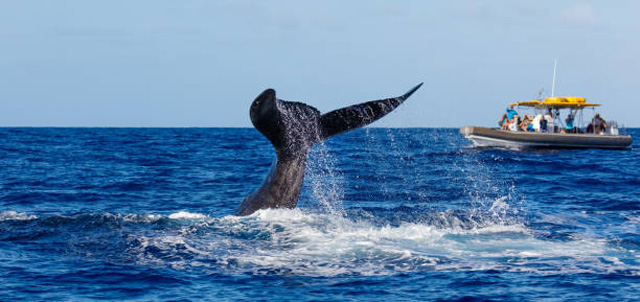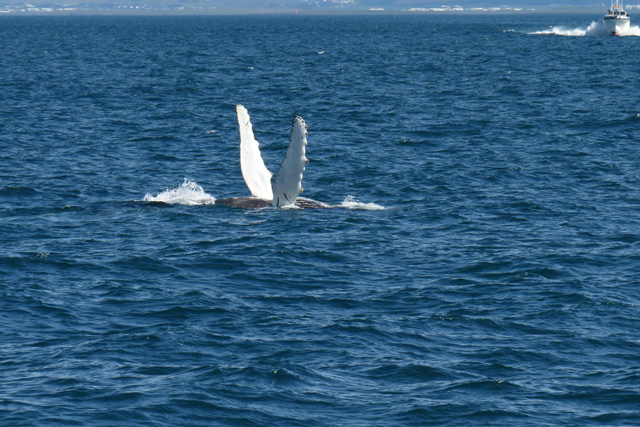When I first learned about whales, I was amazed at how much they communicate and interact with each other. Whales aren’t just majestic; they’re also incredibly social and intelligent. From their songs to their playful behaviors, every action tells a story. Let me take you on a journey to understand the fascinating world of whale behavior and communication!
How Do Whales Communicate?
Whales use a mix of sounds, body movements, and behaviors to communicate. Some species, like humpbacks, are famous for their hauntingly beautiful songs, while others, like sperm whales, use a series of clicks. These sounds travel long distances underwater, making it easier for whales to stay in touch, even when separated by miles.
Whale songs are especially fascinating. Male humpback whales sing complex songs that can last for up to 20 minutes. These songs might be a way to attract mates or mark territory, though scientists are still figuring it out.
Whale Behaviors You Might See in Montauk
Watching whales isn’t just about seeing them swim. Their behaviors are just as thrilling!
Breaching
This is when a whale leaps out of the water and makes a big splash. Scientists think breaching might be a way to communicate, show off, or even get rid of parasites.
Spyhopping
Spyhopping is when a whale pokes its head out of the water to look around. It’s like they’re checking out the scenery—or maybe even us!
Tail Slapping

When a whale slaps its tail against the water, it creates a loud sound. This might be a way to communicate with other whales or even warn predators to stay away.
Fun Fact!
Some whale sounds can travel over 500 miles in the ocean. It’s like talking to someone from New York City to Raleigh, North Carolina without a phone!
The Role of Whale Pods
Whales are social animals, and many live in groups called pods. Pods can range from just a few whales to over a dozen, depending on the species. In these groups, whales work together to find food, protect each other, and even care for young calves.
Some pods, like those of orcas (technically a type of dolphin), have incredibly tight family bonds and communicate with unique sounds that are like a family dialect.
Pro Tip!
When watching whales in Montauk, look for pod dynamics. You might see a mother and calf swimming together or a group working as a team to hunt for food.
Bubble Nets and Other Feeding Behaviors
Have you ever heard of bubble net feeding? It’s one of the coolest whale behaviors. Humpbacks work together to blow bubbles in a circular pattern, trapping schools of fish inside. Then, they swim up through the center with their mouths wide open for a feast.
Whales also use their throat grooves to expand their mouths when feeding. This allows them to take in a huge amount of water, which they then filter to capture krill or fish. It’s like having built-in fishing nets!
Pro Tip!
A humpback whale’s throat grooves can expand to hold up to 15,000 gallons of water—enough to fill a small swimming pool!
The Science of Whale Songs and Sounds
One of the most fascinating aspects of whale communication is their use of sound. Each species has its own unique way of vocalizing:
- Humpbacks sing melodic songs.
- Sperm whales click loudly, which helps with echolocation.
- Blue whales produce deep, low-frequency sounds that are almost impossible for humans to hear without special equipment.
Echolocation is especially important for whales in deep or murky waters. By producing clicks and listening to the echoes, whales can map their surroundings and locate prey.
Body Language and Interaction
In addition to sounds, whales use body language to communicate. Breaching, tail slapping, and even rolling can send messages to other whales. Sometimes, these behaviors are playful, while other times they’re serious signals to warn off threats or attract mates.
Watching these behaviors in person gives you a whole new appreciation for their intelligence and social bonds.
Pro Tip!
Bring a notebook or a wildlife guide on your whale-watching trip. Jotting down behaviors you observe can help you remember the experience and deepen your understanding of whales.
The Importance of Understanding Whale Behavior
Learning about whale behavior and communication isn’t just fascinating—it’s also crucial for protecting them. Whales face many threats, including ship collisions, noise pollution, and habitat destruction. Understanding how they interact and communicate can help scientists create better protections for these incredible creatures.
Fun Fact!
Did you know some whales, like orcas, pass down knowledge through generations? This includes hunting techniques and even certain vocalizations, making them some of the most intelligent animals on Earth!
Final Thoughts
Whales are more than just ocean giants—they’re highly social, intelligent animals with complex behaviors and communication methods. Watching them in Montauk is a chance to connect with nature in a profound way. Whether you’re listening to their songs, watching them breach, or marveling at their teamwork, you’ll walk away with a deeper appreciation for these amazing creatures.


